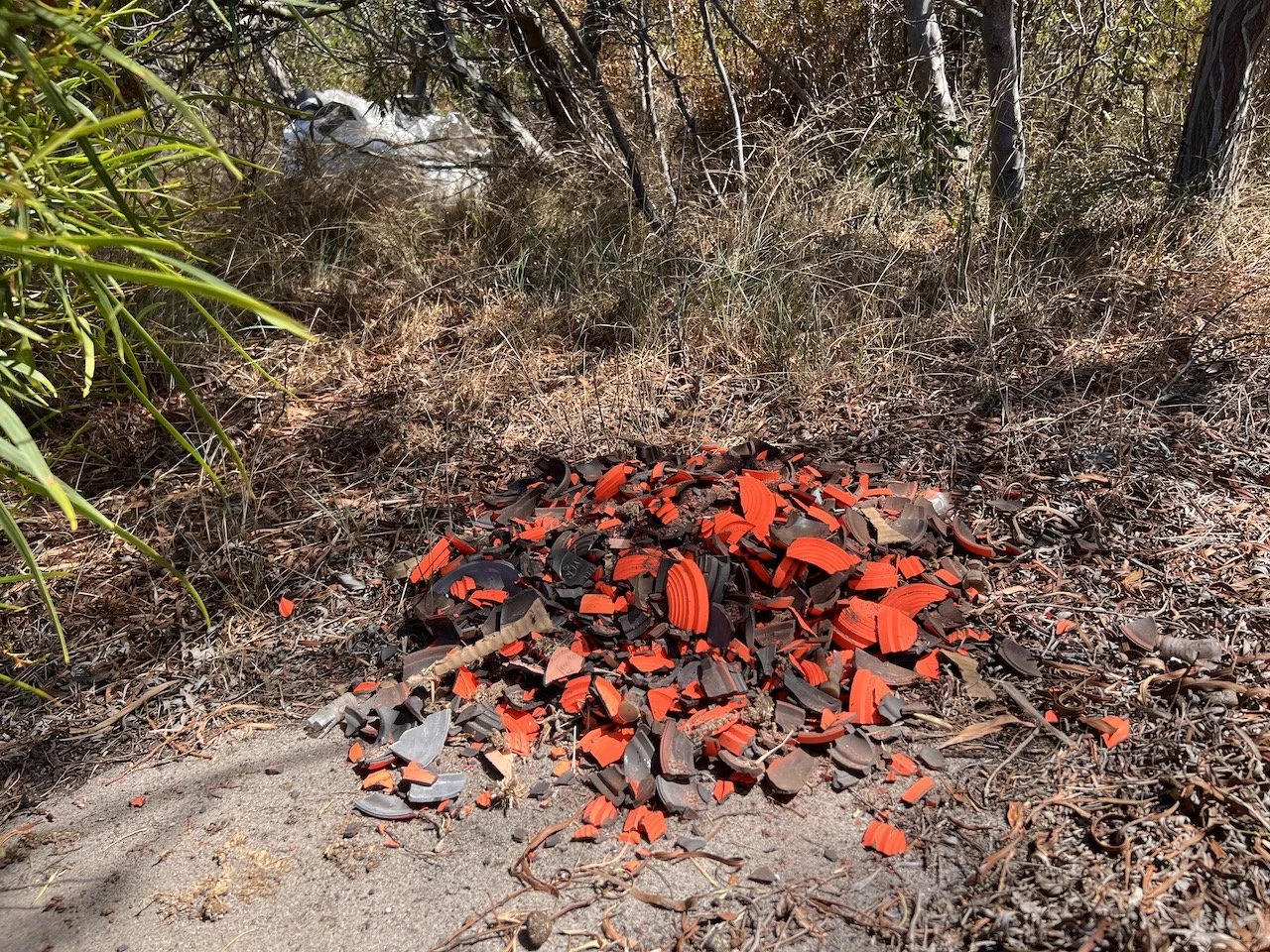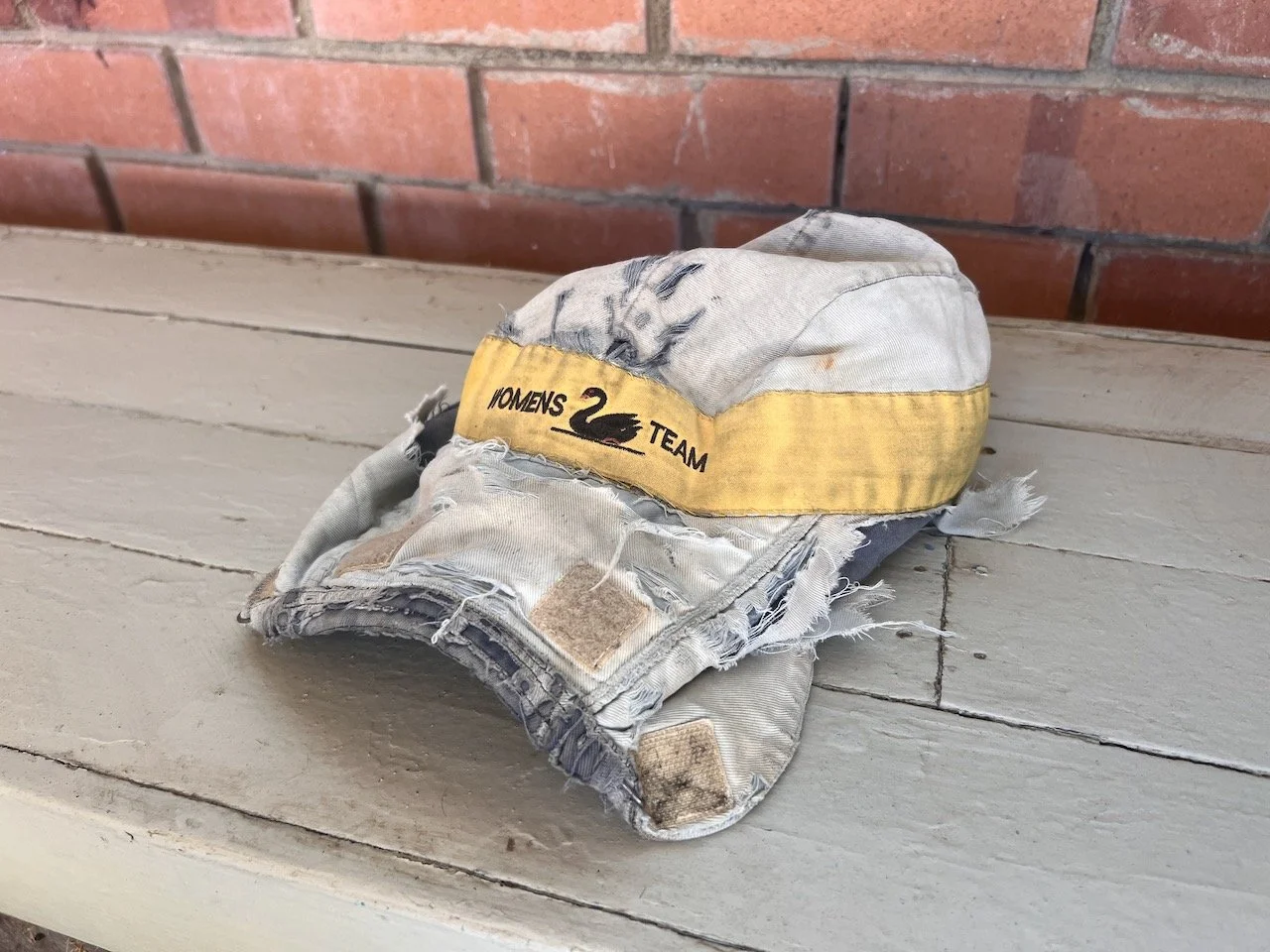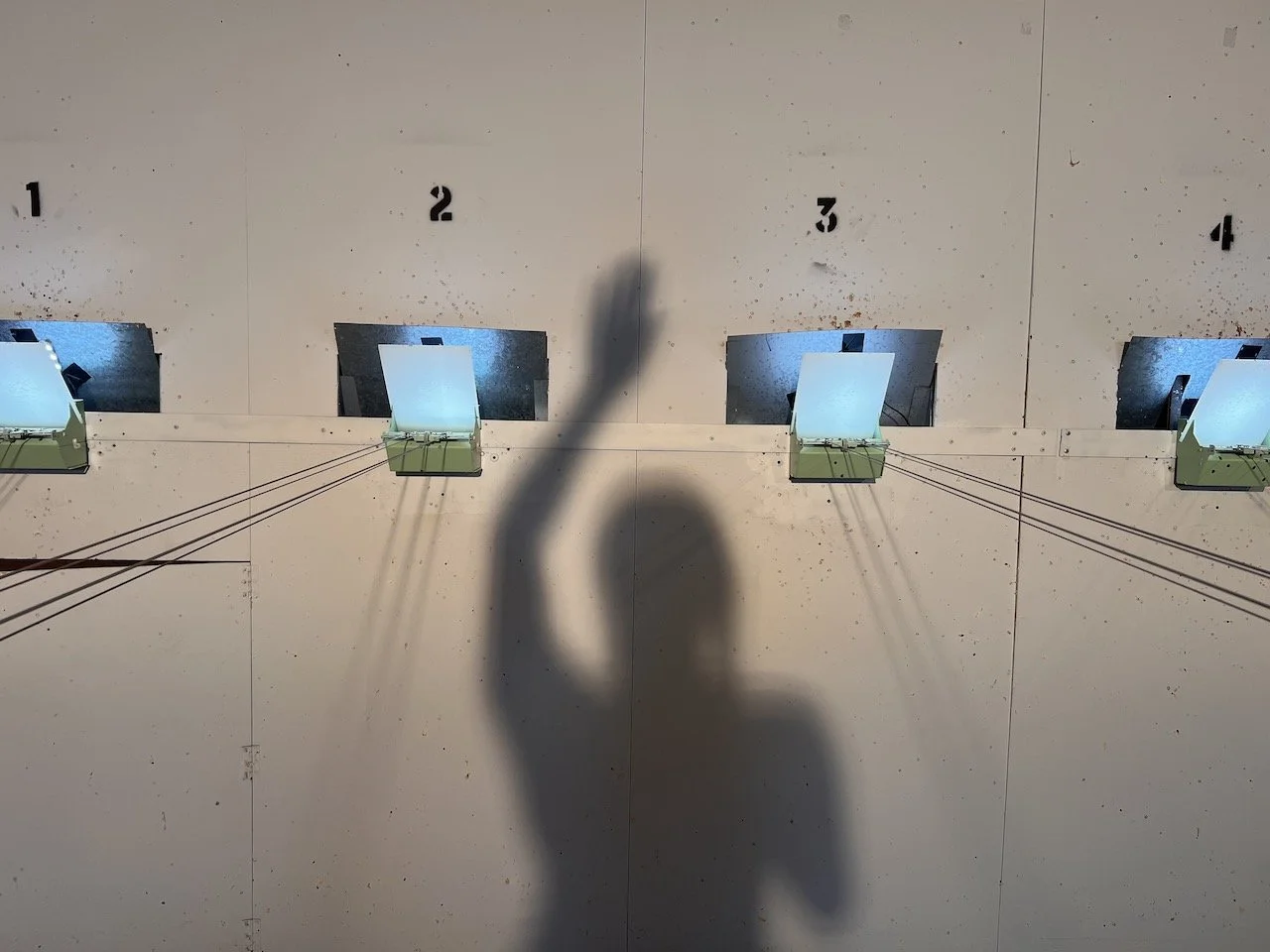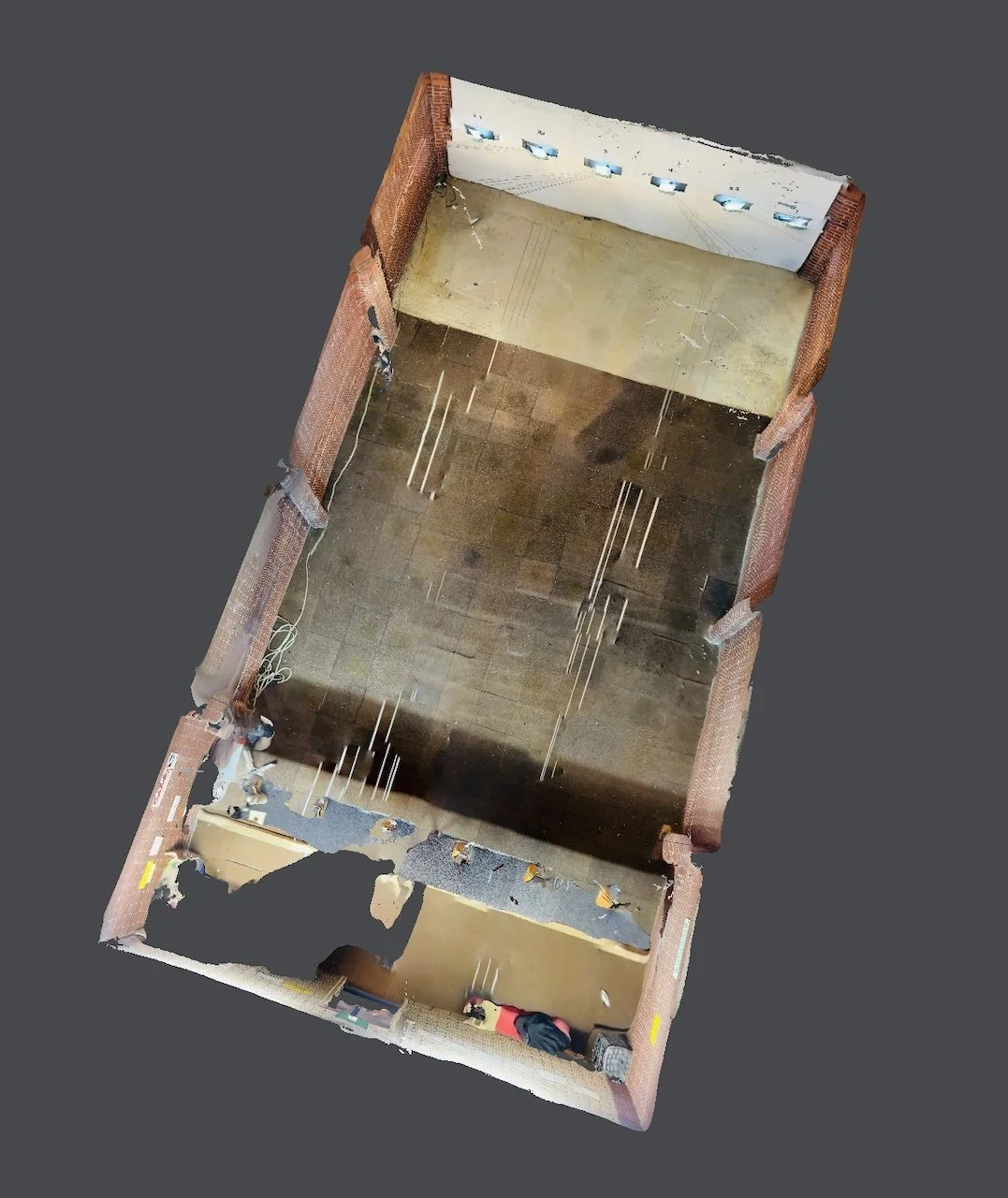Circular Economies Residency: Loren Kronemyer in Esperance #4
Loren Kronemyer is currently working with the community of Esperance, hosted by Cannery Arts Centre. This residency is part of SPACED’s current regional residency program, SPACED 5: Circular Economies.
For two weeks over February and March 2025, Artist Loren Kronemyer and Metatechnician Hosting returned to Esperance to further develop their inquiry into the life cycles of firearms and electronic waste.
ON CLUBS
The world is full of interesting and fun things. When people are united by a common attraction to an interesting and fun thing, they sometimes form a club. Clubs allow people to support mutual learning, obtain collective resources, and achieve a higher level of practice and devotion to their interest, no matter how esoteric. These organisations thrive on principles of self-organization, self-governance, and mutual participation.
I love clubs. Because my creative practice is driven by skill acquisition, I often find my muses among the members of regional special interest clubs. Over the years, I have visited or joined archery clubs, seed-trading clubs, scything clubs, wood-chopping clubs, poultry clubs, deep-ocean swimming clubs, kayak clubs, clubs where people gather to talk about dying, and clubs where people bounce radio signals off the moon, among others.
Each club is unique. Some clubs love sharing, and some are shy. I respect the instinct to close ranks. A club is a precious thing, held together in a delicate balance of personalities, traditions, resources, and volunteer hours. Sudden changes to this ecosystem can cause the whole thing to fall apart.
When getting to know a club, the first step is what I refer to as the “cold call”. This involves picking up the phone and dialing a strange number. The number is usually found through word of mouth, scraped from an old Facebook page or paper newsletter listing. I dial, listen, and say “Hello, my name is Loren. You don’t know me, but I am an artist. I am interested in learning ______. Would it be possible for me to visit your club?” This is the hardest part of the process. What comes after can be magical.
On our first visit to Cannery Arts Centre, we surveyed the local landscape of clubs that could help us in our quest to connect the life cycles of e-waste and firearms. A whole constellation of gun clubs emerged, each dedicated to a different type of shooting, with unique members each requiring a fresh cold call. The Esperance Pottery Club, led by Master potter Krystal Obschonka, acted as my home base, grounding my time at Cannery Arts Centre. From there, I got to know the gun clubs and shooting associations slowly over my first visit, taking care to stay clear of the legal and interpersonal boundaries that make shooting so complicated. I was greeted with generosity and curiosity, opening up pathways to explore in my future visits.
With help from Emerging Producer Sarsby [supported by Open Space], I prepared for my second stay at Cannery by first reconnecting with all three of the major shooting associations in the region. We were pleased to find out that all three would be hosting public activities during the same weekend.
CLAY TARGET CLUB BUSY BEE
Saturday morning was a busy bee at the Clay Target Club. Here we found a bustling team of members, two generations across several families, preparing for their 62nd Annual Easter Shoot. After much anticipation from my last trip, I finally gained access to the club rooms, where I explored rare and special artefacts of this association.
I had been searching for months for documentation of the rumor that the clay target club used to be on the beach, allowing folks to shoot at targets that would hover out over the waves and crash to the ocean floor. There were the photos: blue ocean, white sand, and red flags. Nearby were photos of the Esperance Bay Gun Club sign with a bush fire blazing in the background, next to images of people launching a kayak on the same turf, flooded during a storm. Under the bartop at the Sitting Duck Bar, there was a small plaque identifying where the 2007 flood waters reached. We would have been ankle deep in water as we sipped our beers. Desmond Neale, who identifies as club historian, talks us through these artefacts, and leaves us packing with a bag of retired clay targets for us to melt.
ESPERANCE RIFLE CLUB PICNIC SHOOT
The following morning we start at the Esperance Rifle Club Picnic shoot. We arrive, and drive through ranks of motorhomes and tents that house competitors from all over the state for this weekend’s competition. A rifle is excellent for shooting precisely at great distances, and because of this, their club is laid out across a lengthwise kilometre. Over the course of the weekend, this competition will proceed with the shooters advancing along this line, gradually narrowing the distance between them and the targets as they accumulate points.
If shotgun shooting is fast and instinctual, rifle shooting is slow and deliberate. The competitors lie flat on their bellies like snakes, with guns mounted on stands and tripods, eyes moving between their scopes and digital screens that report the accuracy of their shots. I speak to a range officer and enter the club rooms, where afternoon tea and vanilla slice are laid out among plaques and trophies. Although this is a public event, every time I consider taking a photo, someone approaches me and politely intervenes by asking if I need anything. This club strikes me as shy, and I am respectful of their privacy. The state has transitioned from a heavily-armed populace, to the strictest regulatory environment in the country, evidenced by the gun buyback that we documented in our last visit.
We settle into a seat and talk to the shooters as they come off the range. One member takes care to kindly introduce me to the female shooters in the club. We share about the legacy of Annie Oakley, about our varied rhythms of travelling for competitions, and about collaborating in art and sport.
PISTOL CLUB
Finally on Tuesday we return to the Pistol Club, to the indoor air rifle range, which I have fixated on since our last visit. This room is a dim and silent as a chapel. Hosting and I have drafted plans to recreate this range in Lutruwita, to build a shooting gallery in an art gallery.
We meet with club president Mick Rose, who invites us back when the club is quiet to explore every facet of the 10-metre range. Just like an art gallery, they have a false wall, which catches the bullets that pass through the paper targets. A small red light on the wall shines when shooting is on. Metatechnician Hosting creates a 3d scan of the room, so we can visit it from afar.
Images in order: Esperance Bay Gun Club: photo courtesy of the Esperance Clay Target Club, clay target rubble nest, heavily customised Women’s Team shooting hat. The brim is cut and sewn to allow room to fit against the rifle scope, shooting gallery self portrait, indoor air rifle range red light: all photos by Loren Kronemyer, Pistol Club Gausian Splat Point Cloud, created by Hosting.
More information about the Circular Economies artists, host communities and projects as they unfold can be found by subscribing to SPACED’s monthly email newsletter, and following SPACED on Facebook and Instagram.
To learn more about Loren Kronemyer, please join her mailing list at www.lorenkronemyer.com and explore her other notes @lorenrubicana.
Circular Economies is produced as a joint partnership by PICA - Perth Institute of Contemporary Arts and SPACED.








